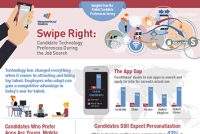Recruiting is changing at a rapid pace. Some organizations are abandoning traditional methods for social media; some think software can do a better job than people.
At RecruitCon Road Trip East in Boston, keynote speaker Kurt Anderson, director of human resources for Definitive Healthcare, a provider of data for the healthcare industry, began his presentation by showing two images, one that looked like a magnet and another that looked like a black lump.
Yesterday we heard from Michael F. Brown of Camden Consulting Group on the topic of HR strategy and small businesses. Today we’ll look at how even small businesses can benefit from rewarding their talent.
When considering jobs, what factors do college students find most important? A new report from the National Association of Colleges and Employers (NACE) provides insight.
Today we’ll hear from Michael F. Brown of Camden Consulting Group concerning why small businesses really do need to make the most of HR strategies.
What can you learn about how employees and job seekers view your company by searching Twitter? Perhaps more than you might realize.
Add another item to the list of what attracts Millennials to an organization: aesthetics. And it’s not only office aesthetics. Websites and other branded material matter, too.
Technology combined with a personal approach is the top priority for job seekers, according to new research from ManpowerGroup Solutions. Swipe Right: Candidate Technology Preferences During the Job Search provides fresh insight from more than 14,000 people in 19 countries into application preferences and includes practical steps employers can take to attract and retain right-skilled […]
If baseball is a metaphor for life, then the success of the World Series champions Houston Astros is a metaphor for talent acquisition and talent management.
Early data for the Class of 2017 from the National Association of Colleges and Employers (NACE) show that salaries for several majors have gained ground in comparison to this time last year, and salaries for other majors have dipped. NACE indicates that at this early juncture data are preliminary and limited.*
In part 1 of this article, we outlined why new employee salaries should take competitive pay information into account and about how setting a competitive salary level is a tool to reflect and help meet organizational goals. Now, let’s take a look at where to get data on what your competitors are paying.










